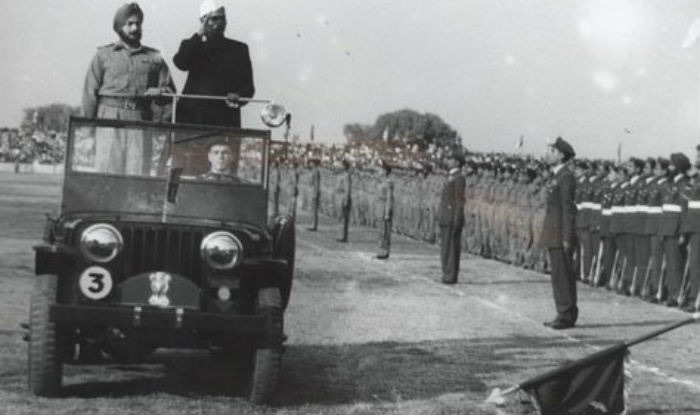Republic Day 2019- Interesting Facts About The First Republic Celebration In India
By: Priyanka Maheshwari Mon, 21 Jan 2019 12:17:55

Republic Day is one of the three National Festivals in India. It is celebrated to commemorate the day on which our constitution came into force. On this day, we gear up to watch the grandeur of Indian Armed Forces and military capabilities. Each year this festival is celebrated with great fervour and enthusiasm. There is a sense of excitement and pride within Indians and they look forward to the upcoming Republic Day.
In today’s time, we only look for major details like who will be the chief guest, what kind of parade will take place, which school will be chosen to perform, who will be the recipient of the National Bravery Awards in the parade this year? But, in the midst of all this, it seems that we have forgotten the real essence of this festival. We have forgotten the original glory of the first Republic Day – 26 January 1950. If you want to know some interesting facts about of first Republic Day and also the history associated with it read below –
The History
“Today India Becomes A Republic” read the headline in a popular British newspaper. The date was 26 January 1950, almost two and half years after India had gain independence. Why did India wait this period to become a republic?
British trade with India commenced in the 1600s but by the mid-1700s, the British East India Company had seized large areas of land and this was the start of the Company rule. With the passing of the Government of India Act in 1858, the British Crown assumed direct control of the administration in the Indian subcontinent and thus came about the British Raj. Indian resistance for many decades remained sporadic and disconnected. By the early 1900s, though, India’s independence struggle started to gain much momentum. The rise of MK Gandhi and other national leaders and the growing strength of the Indian National Congress it became clear that India would be soon granted self-rule. The rise of radical leaders who were unwilling to settle for dominion status and the united struggle for independence translated into the demand for Purna Swaraj.
In August 1947, British India was divided into the independent nations of India and Pakistan. With this, though independent, India remained a constitutional monarchy with King George VI as its head of state. Earl Mountbatten stayed on as the Governor-General of India. The Constituent Assembly of India had been set up (in 1946) and its members had been elected. The Constituent Assembly of India had a very significant task ahead of them – drafting the Constitution of what would later become the most populous democracy of the world. After much debate, detailed discussions, and with the help of a broad, inclusive outlook the members put together the longest written constitution of the world It contains 444 articles in 22 parts, 12 schedules, and (now has) 118 amendments and is made up of with 146,385 words.

The Constitution of India was adopted by the Constituent Assembly on 26 November, 1949, and came into effect across the country on 26 January, 1950. The day India adopted its new constitution it became the Republic of India.
Some Interesting Facts
* On 26 January, 1950 India became a Republic at 10.18 am.
* A few minutes later, at 10.24 am Dr. Rajendra Prasad was sworn in as the first President of India
* The first Constitution of India was handwritten in Hindi and in English. It was signed by the members of the Constituent Assembly on 24 January, 1950. These copies are still preserved in the Parliament’s library and are one of the significant relics of independent India.
* Between 1950 and 1954, India did not have a fixed venue for the Republic Day celebration. Initially it was held in Red Fort, then National Stadium, then in Kingsway Camp, and then in Ramlila ground. Finally in 1955 Rajpath was chosen as the permanent venue. This was the first Republic Day parade.
* The members of the Constituent Assembly also adopted the National Anthem – Jana Gana Mana – on 24 January 1950. It was written by Rabindranath Tagore in Bengali and later translated into Hindi.
Republic Day Conventions
* The President of India addresses the nation on the eve of the Republic Day and this address is a very eagerly awaited one.
* The national flag is unfurled by the President of India prior to the Republic Day Parade and is greeted by a 21 gun salute.
* The Indian Republic Day celebrations last for three whole days from 26 January to 29 January. The celebrations commence with the President’s arrival for the flag hoisting and parade at Rajpath and end with Beating The Retreat at Vijay Chowk.
* The Republic Day, the Independence Day (15 August) and Gandhi Jayanti (2 October) are India’s three national holidays.





